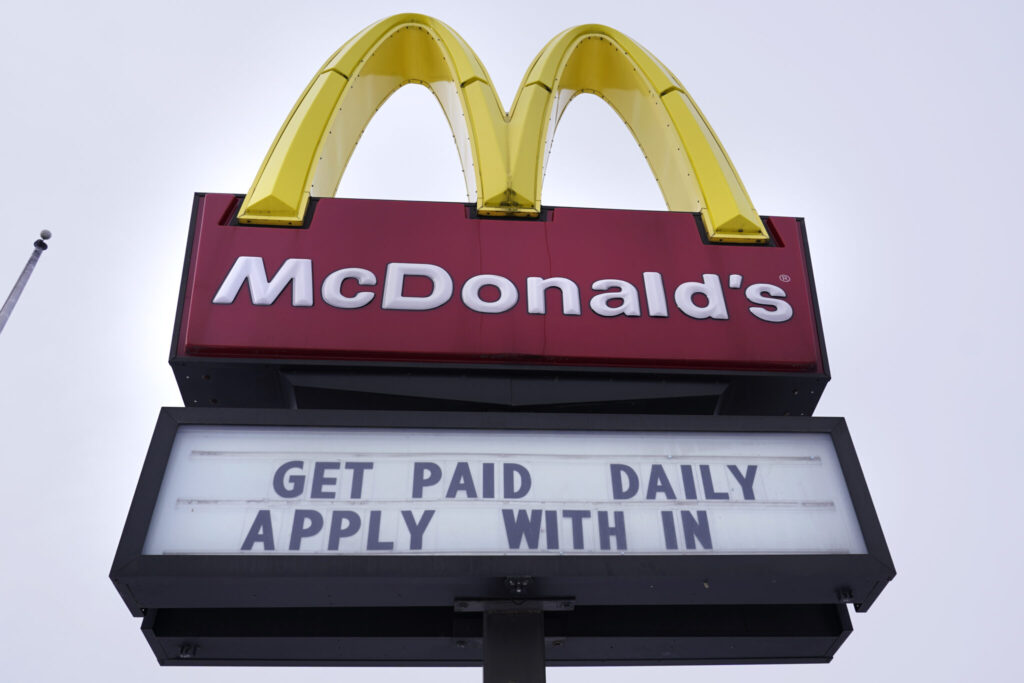U.S. job openings fell less than expected in January and data for the prior month was revised higher, pointing to persistently tight labor market conditions that likely will keep the Federal Reserve on track to raise interest rates for longer. But the Labor Department’s monthly Job Openings and Labor Turnover Survey, or JOLTS report, on Wednesday also hinted at some cracks forming in the labor market. Layoffs rose in January and job cuts were higher than initially thought in 2022. Fewer people voluntarily quit their jobs. The Associated Press has the story:
Jan. US job openings dip, but still high at 10.8M
Newslooks- WASHINGTON (AP)
U.S. employers posted 10.8 million job openings in January, indicating the American job market continues to run too hot for the inflation fighters at the Federal Reserve.
Job openings fell from 11.2 million in December but remained high by historical standards, the Labor Department reported Wednesday. Employers also hired more workers in January. But layoffs rose.
For 20 straight months, employers have posted at least 10 million openings — a level never reached before 2021 in Labor Department data going back to 2000. The number of openings in January exceeded what economists had forecast and translates to about two vacancies for every unemployed American.
Still, there some signs the job market is cooling in the Labor Department’s monthly Job Openings and Labor Turnover Summary (JOLTS) report. Amid high-profile job cuts at many big tech companies such as Google and Amazon, overall layoffs rose in January to 1.7 million, highest since December 2020. And the number of Americans quitting their jobs – a sign they are confident they can find better pay or working conditions elsewhere – fell to the lowest level since April 2021.
The American job market has been surprisingly resilient in the face of punishing inflation and rising interest rates.
The years 2021 and 2022 were the two best years for job creation in official records dating to 1940. Hiring was expected to slow this year; instead, employers added a stunning 517,000 jobs in January, and economists expect that they added another 208,000 last month, according to a survey of forecasters by the data firm FactSet. The February numbers come out Friday.
In January, the unemployment rate fell to 3.4%, lowest since 1969.
But the flipside of healthy economic growth and robust hiring has been a resurgence of inflation. Consumer prices hit a four-decade high last June — up 9.1% from a year earlier. Inflation rates have since come down — to 6.4% in January — but that is more than three times the Federal Reserve’s 2% target. A tight labor market can push wages — and overall prices — higher.
In response, the Fed has raised its benchmark interest rates eight times in the past year.
“The JOLTS report showed only a slight slowing in the robust labor market, keeping opportunities plentiful for workers looking for better, higher paying jobs,’ said Robert Frick, economist at Navy Federal Credit Union. “The report is another chunk of data pushing the Fed to raise’’ its benchmark rate by half a percentage point at its next meeting March 21-22, up from a quarter-point increase at its previous meeting, Jan. 31-Feb. 1
Fed policymakers are aiming for a soft landing — slowing the economy enough to contain inflation without causing much economic pain. One hope was that that employers would cut job openings — and ease upward pressure on wages that can feed inflation — and without actually cutting many jobs.
Many economists believe the Fed rate hikes will slow the economy enough to cause a recession later this year.







